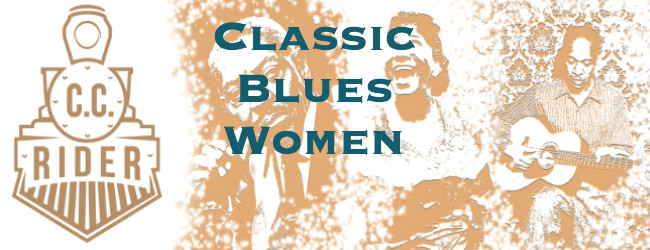This is the latest from The Bluesmobile’s C.C. Rider, who spends her life venerating the founding fathers of the blues. She’s walked the crooked highways of this singing country to resurrect the voices of the past. With the dirt of the Delta on her hands, she sleeps in the shadow of the giants on whose shoulders popular music now stands.
Classic Blues Women
Until August 10, 1920, record companies didn’t even try to sell music to—or by—black people. But on that day Mamie Smith, a 37-year-old medicine show singer from Cincinnati, barreled into a New York studio. Mamie was filling in for a white singer who’d taken ill before the session. Backed by her Jazz Hounds, Mamie’s group waxed a number called “Crazy Blues.” It was the very first blues record. And nothing would ever be the same.
The recording blew open the doors to what had previously been an exclusively white market. Mamie Smith and her Crazy Blues sold seventy-five thousand copies in the first month. It was so popular that storeowners began selling it under the counter. Pullman porters bought in bulk and hocked it to rural listeners for profit. And suddenly, female blues singers were all the rage.
We now call that era the heyday of the Classic Female Blues singer. You had ladies like Ma Rainey, Ethel Waters, and of course, Bessie Smith. The one they called the Empress. The highest paid black artist of the ‘20s, she was glamorous, beautiful, and a killer on the microphone. Here she is—Bessie Smith—with her masterpiece, “Nobody Knows You When You’re Down and Out.”



